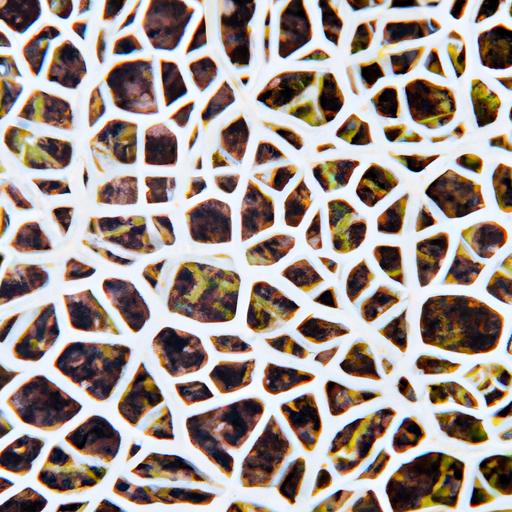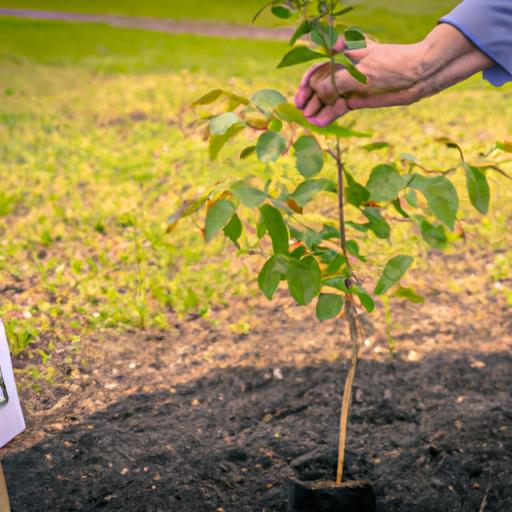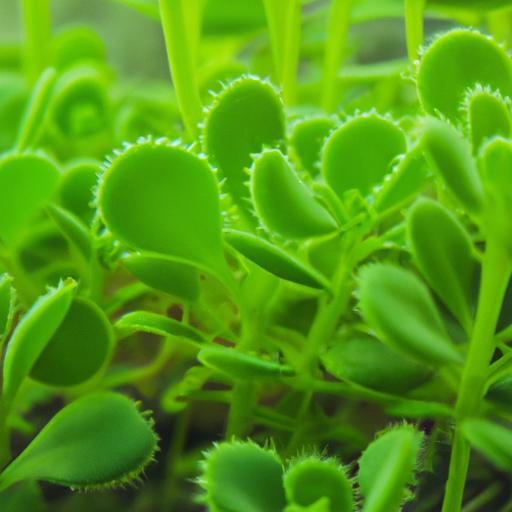Did Plants Come Before Animals? Unraveling the Order of Evolution
Have you ever wondered how life on Earth began? The question of whether plants came before animals or vice versa has intrigued scientists and nature enthusiasts for centuries. In this article, we delve into the fascinating world of plant and animal evolution to understand the order in which they emerged. Join me on this journey as we uncover the secrets of our natural world.
Understanding the chronology of plant and animal evolution is crucial to comprehending the intricate web of life on our planet. By unraveling the order of their emergence, we gain valuable insights into the development of ecosystems and the interdependence between organisms. This knowledge not only deepens our appreciation for the diversity of life but also aids in the conservation and preservation of our natural resources.
From the primordial soup to the present, Earth has witnessed an incredible journey of life’s origins. The emergence of early plant life was a pivotal moment in this journey. These ancient photosynthetic organisms laid the foundation for the entire ecosystem as we know it today. But did plants come before animals? Let’s find out together.
Stay tuned as we explore the early forms of plant life and their incredible adaptations that allowed them to thrive in their environment. We will also delve into the world of early animals, examining their unique characteristics and the role they played in shaping our planet. By examining fossil evidence and employing scientific analysis, we can piece together the puzzle of the order of evolution.
Are you ready to embark on this captivating exploration? Fasten your seatbelts as we dive into the depths of time and unravel the ancient mysteries of plant and animal evolution. Let’s shed light on the question: did plants come before animals? The answer awaits us in the annals of history.
The Origins of Life on Earth
Early Earth Conditions: A Glimpse into the Past
To understand the order of plant and animal evolution, we must first travel back in time to the early Earth. Picture a world devoid of life, with a harsh environment characterized by extreme temperatures, volcanic activity, and a turbulent atmosphere. It is within this primordial setting that the origins of life took place.
Unraveling the Mystery: Scientific Theories on Life’s Beginnings
Scientists have proposed various theories to explain the origins of life on Earth. One prominent theory is the primordial soup hypothesis, suggesting that life emerged from a mixture of organic compounds in the Earth’s oceans. This theory posits that simple organic molecules gradually formed more complex structures, eventually giving rise to the first living organisms.
Another compelling theory is the panspermia hypothesis, which suggests that the building blocks of life arrived on Earth through comets or meteorites. These extraterrestrial sources may have carried the necessary ingredients for life, including organic molecules and even microorganisms. This theory raises intriguing possibilities about the interconnectedness of life in the universe.
The Significance of Studying Life’s Origins
Studying the origins of life is not merely an exercise in scientific curiosity. It holds profound implications for our understanding of plant and animal evolution. By unraveling the beginnings of life, we gain insights into the fundamental processes and mechanisms that underpin the development of all organisms.
Understanding the origins of life helps us appreciate the remarkable adaptations that plants and animals have undergone over millions of years. From the evolution of photosynthesis in plants to the development of complex nervous systems in animals, these transformations are rooted in the earliest stages of life on Earth. By exploring the origins of life, we unlock the secrets to the remarkable diversity and complexity of our natural world.
Join me as we delve deeper into the fascinating realms of early plant life and the emergence of animals. Through the lens of scientific theories and the wonders of the natural world, we will uncover the intricate tapestry of life’s origins and its profound impact on plant and animal evolution. Let’s continue our journey of discovery together.
Early Plant Life
Plants, the green giants of our planet, have a rich evolutionary history that dates back millions of years. Let’s embark on a journey through time and explore the emergence of early plant life forms.
The Emergence of Early Plant Life Forms
Life on Earth began in the oceans, and it was here that the first plant-like organisms emerged. Early plant life forms, known as algae, appeared around 1 billion years ago. These simple organisms, resembling slimy green threads, paved the way for the development of more complex plant species.
Over time, these primitive algae evolved into diverse forms, adapting to various environments. From freshwater to marine habitats, early plants conquered new territories and colonized the Earth. As they ventured onto land, they faced new challenges and underwent remarkable transformations.
Characteristics and Adaptations of Early Plants
Early plants had to overcome numerous hurdles to thrive on land. One of the key challenges they faced was obtaining water and nutrients from the soil. To tackle this, they developed specialized structures such as root-like appendages called rhizoids. These structures anchored the plants to the ground, allowing them to absorb water and nutrients.
Another crucial adaptation was the development of waxy layers on their surfaces. These cuticles minimized water loss, preventing desiccation in the dry environments they encountered on land. Additionally, the evolution of vascular tissues, such as xylem and phloem, enabled the efficient transport of water, minerals, and sugars throughout the plant.
The Importance of Photosynthesis in Plant Evolution
Photosynthesis, the process by which plants convert sunlight into energy, played a pivotal role in plant evolution. Early plants, like their modern counterparts, possessed chlorophyll, a pigment that harnesses the power of the sun. Through photosynthesis, plants not only produced energy but also released oxygen into the atmosphere, shaping the Earth’s composition.
This newfound oxygen revolutionized the planet, paving the way for the emergence of more complex life forms, including animals. The symbiotic relationship between plants and animals became intertwined, with plants providing oxygen and food while animals aided in pollination and dispersal.
In conclusion, the emergence of early plant life forms marked a significant milestone in the evolution of our planet. From humble algae to the majestic trees that adorn our landscapes, plants have shaped our world in countless ways. By adapting to new environments and harnessing the power of photosynthesis, they have played a vital role in the progression of life on Earth. In the next section, we will explore the fascinating world of early animal life and its connection to plant evolution.
Early Animal Life
The Appearance of Early Animal Life Forms
When it comes to the emergence of early animal life forms, the Earth witnessed a remarkable transformation. From simple, single-celled organisms to more complex multicellular creatures, the evolution of animals unfolded over millions of years. These early animals appeared during the Ediacaran Period, approximately 635 to 541 million years ago, leaving behind intriguing fossils that provide us with glimpses into their ancient world.
Characteristics and Adaptations of Early Animals
Early animals possessed a diverse array of characteristics and adaptations that set the stage for the evolution of complex life forms. From sponges to jellyfish-like organisms, these ancient creatures showcased various body structures, including radial symmetry and bilateral symmetry. They developed specialized tissues, such as nerve cells and muscle fibers, enabling basic sensory perception and movement.
Some early animals developed protective shells or exoskeletons, providing support and defense against predators. Others evolved appendages, such as tentacles or limbs, allowing for interaction with their environment. These adaptations were instrumental in their survival and paved the way for the incredible biodiversity we witness today.
The Significance of Mobility in Animal Evolution
Mobility played a pivotal role in the evolution of animals. The ability to move allowed early animals to explore new habitats, seek food sources, and escape predators. This mobility facilitated the colonization of various ecosystems, leading to the diversification and expansion of animal life forms. Over time, complex locomotor systems, such as fins, legs, wings, and even the ability to fly, evolved, further enhancing the adaptability and success of animals across different environments.
The development of mobility also influenced the evolution of other traits, such as sensory organs and complex nervous systems. Animals with enhanced mobility required increased coordination and sensory perception to navigate their surroundings effectively. This led to the evolution of more intricate sensory systems, including eyes and chemoreceptors, enabling animals to detect and respond to stimuli in their environment.
In conclusion, early animal life forms emerged during the Ediacaran Period, showcasing a wide range of characteristics and adaptations. Their ability to move and explore their surroundings played a crucial role in their survival, leading to the diversification and expansion of animal life on Earth. The significance of mobility in animal evolution cannot be understated, as it paved the way for the development of complex sensory systems and the colonization of various ecosystems.
Fossil Evidence and the Order of Evolution
Unveiling the Clues: Fossil Evidence
To shed light on the chronological order of plant and animal evolution, scientists turn to the invaluable clues preserved in the fossil record. Fossils provide a window into the past, allowing us to glimpse the ancient organisms that once inhabited our planet. Through meticulous examination and analysis, paleontologists have unearthed remarkable evidence that helps us unravel the order of appearance.
Analyzing Fossils: Methods and Techniques
The study of fossils involves a range of methods and techniques to extract meaningful information. Scientists employ various approaches to analyze these ancient remnants, including radiometric dating, stratigraphy, and comparative morphology. By utilizing these tools, researchers can determine the relative ages of fossils and piece together the intricate timeline of plant and animal evolution.
Radiometric dating, for instance, relies on the decay of radioactive isotopes in fossils to estimate their age. This technique provides a reliable method for determining the approximate time when a particular organism lived. Stratigraphy, on the other hand, examines the layers of sedimentary rock in which fossils are found. These layers act as a temporal archive, with deeper strata containing older fossils and shallower ones revealing more recent organisms.
Decoding the Order: Insights from the Fossil Record
The fossil record holds a wealth of information that allows scientists to decipher the order of appearance of plants and animals. By comparing and analyzing various fossil specimens, researchers can identify distinct evolutionary trends and patterns. This meticulous examination unveils the gradual emergence of different groups of organisms, providing critical insights into the sequence of plant and animal evolution.
Through the careful study of fossils, scientists have determined that plants indeed preceded animals in the evolutionary timeline. The fossil record reveals the appearance of early plant life forms, such as algae and primitive land plants, long before the emergence of complex animal organisms. This finding highlights the fundamental role that plants played in shaping the Earth’s ecosystems and paving the way for the subsequent diversification of animal life.
In conclusion, the fossil evidence overwhelmingly supports the notion that plants came before animals. By examining these ancient remains and employing scientific methods, we gain a clearer understanding of the order of evolution. The fossil record serves as a time capsule, offering invaluable insights into the history of life on Earth and the intricate relationships between plants and animals. Let us continue our exploration, uncovering more secrets of our natural world.
Conclusion
In conclusion, the question of whether plants came before animals has intrigued scientists and nature enthusiasts for centuries. By examining the origins of life on Earth and analyzing fossil evidence, we can shed light on the order of plant and animal evolution.
Through the emergence of early plant life, with their photosynthetic abilities and unique adaptations, the stage was set for the development of ecosystems as we know them today. These ancient plants paved the way for the subsequent appearance of early animals, with their mobility and diverse characteristics. Together, plants and animals have shaped our planet and created the intricate web of life we see today.
Understanding the order of plant and animal evolution is not only fascinating but also crucial for our scientific knowledge and environmental conservation efforts. By recognizing the interdependence between plants and animals, we can better appreciate the delicate balance of nature and work towards preserving the biodiversity of our planet.
So, did plants come before animals? The evidence from the fossil record points towards the emergence of plants preceding the appearance of animals. However, it is important to note that the evolution of life on Earth is a complex and ongoing process, with new discoveries constantly reshaping our understanding.
As we continue to unravel the mysteries of our natural world, let us embrace the awe-inspiring journey of plant and animal evolution. By nurturing our curiosity and preserving the delicate ecosystems that sustain life, we can ensure a harmonious coexistence with the fascinating flora and fauna that call our planet home.
Join me in this never-ending exploration of the wonders of our world. Let us celebrate the incredible journey of life, from the humble beginnings of plants to the diverse array of animals that roam the Earth. Together, let’s cherish and protect the extraordinary beauty that surrounds us.





